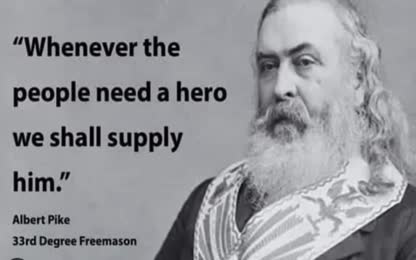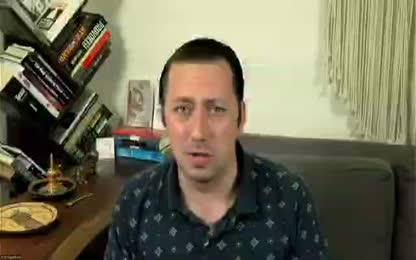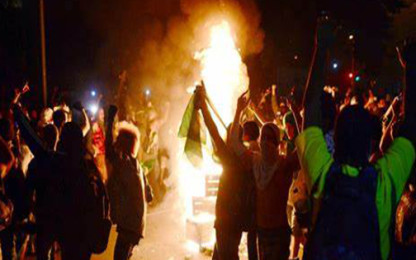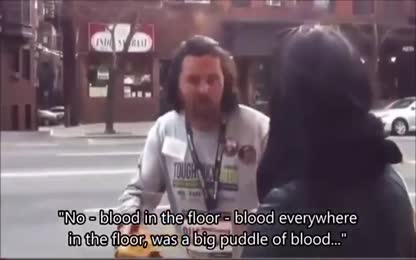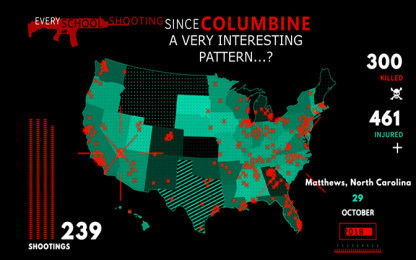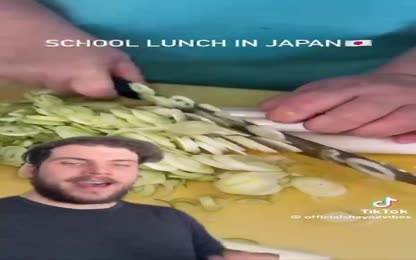Advertisement
Santa Clarita California Saugus School Hero Choir Teacher Ms. Holt
Santa Clarita California Saugus School Hero Choir Teacher Ms. Holt
- Category: Well Documented Violent Event,Alleged Shooting/Mass Shooting,Active Shooter or Drill?,Active Shooter Drill
- Duration: 18:09
- Date: 2019-11-20 09:04:20
- Tags: santa clarita california saugus school hero choir teacher ms. holt
67 Comments
Video Transcript:
to you from our partners at ABC News. And they spoke with a choir teacher who says a wounded student ran into her room. Listen to this. She was in the bar. School hasn't necessarily started. I think she was just hanging out outside my room where everything happened and they all ran into my classroom. Many students who aren't in my choir necessarily ran into the class and she was one of those students. So I met her for the first time today actually. So how are you feeling right now? I know it's all a shot right now. You all trained for this. I've never trained for this mentally. Yeah. How are you feeling? I don't think I have an organization for my feelings or thoughts right now. I'm mostly just hoping that student is okay. I've never experienced such a strong fight or flight situation. I'm not typically a calm person but in that situation for my students, I think that kind of kicks in. I think that yeah, it's hard to really organize how exactly I'm feeling just very overwhelmed and in a lot of shock at the moment. And not to be too graphic. You were covering bullet wounds. Is that correct or covering wounds? Yeah, two gunshot wounds. Where were they at? Yeah, her side here and her shoulder up here. And she was really strong. She was really great. She was joking with me. She was like, I'm going to be a home schooled after this. So she was doing well as much as I could say. All right. That is Caitlin Holt, an interview that we did with her just a little while ago. She's a choir teacher who had to administer aid to a young woman, a young girl, who was shot twice. Hold after this. So she was doing well as much as I could say. As much as I could say. As much as I could say. So at what point then did you realize that one of the students in your classroom had been shot? Did you know right away? No, actually, that was one of the girls who had run in. And she also did not realize that she had been shot. It wasn't until I had gathered all the students in my office and everyone was sitting down that she said to me, I think I may have been shot. And what did you think at that time? I honestly thought there's no way she's been shot because she ran in. But I looked and she had been shot twice, right? Yeah. Yeah. And she actually didn't notice the second one until I was wrapping the first one. So where was she shot and how did you know what to do to treat her? She had been shot in her right side and also in her left shoulder. And she noticed the side one first. Tell me, you said your sister was already at school. You texted her. What did she say? She said, so she's inquired. So she was going to the choir room and she's still inquired. So she's inquired. So she's inquired. So she's going to the choir room and she's still there. She might be getting out right now. But she was just telling me that she was saving everything is okay. But she said it was really close to her. This area from what you understand, you said it's kind of the choir room and kind of the front quad. Yeah, I mean, you're like the gym maybe like the quad. And so that time of morning, I mean, is it crowded? Tell me. There's like a good amount of people, but most people are like getting here for the most part. Like everyone starting like coming in and like stuff like that. Ben, thank you for talking to us. I'm glad you're okay. I'm glad your sister is okay. She was really great. She was joking with me. She was like, how are we at home schooled after this? She was joking around a little bit and she was really great. She was joking with me. She was like, how are we at home schooled after this? She was joking around a little bit around a little bit around a little bit. And after that, then our band director told us to run into we have these other rooms inside of the band rooms. So we ran into like, there's a music library and there's an office. A half of us ran into the music library. The other half ran into his office and we stayed there for about like 30 minutes to 40 minutes after the police came in. And told us to like remain calm and that they were there. And then after we were escorted into the choir room, which is connected to the choir room, which is connected to the band. So you waited until police actually got to you. You guys did not try to venture out? No, we didn't try because we were all blah, blah. Like there's about like 40 or 30 of us in that one room. So we didn't try looking out. We just stayed and put it there. Strong and she was responsive for the duration that I was taking care of her. That's amazing. Incredible bravery really on both your parts. What an amazing incredible bravery really on both your parts. What about that I was taking care of her? That's amazing. Incredible bravery really on both your parts. What about the training? I mean, you had you at the school had helped you. The choir teacher, Caitlin Holt, was barricading her class with a piano when 14-year-old Addison was Rochtien. The piano when 14-year-old Addison was Rochtien, shot in both a hip and shoulder. We cleared a space for her and I wrapped the wound on her shoulder. She did have another gunshot wound. I should have never had to treat a gunshot wound as a choir teacher. And this something really wrong and something has to change because I held a bleeding child today in a room with 40 solving children. Addison now recovering. The girl's aunt is also a teacher at the school. She says she already evacuated when she heard her niece had been shot. My husband is the one who texted me to let me know that Adi was one of the kids who was shot. She's doing well and she's stable and so she's going to be okay. And that is good news. But one thing that really struck me is that that teacher was able to treat the wounds of that student in her class because there was a trauma kit in that classroom. And this is what it is. It's called a keep the pressure kit inside a blood clotting agents in big bandages. It's provided by a nonprofit to every single classroom in this entire school district. That is shocking and depressing. But I suppose it's good to learn that one of these may have actually saved a student's life here yesterday. So yeah, indeed, but to hear that choir teacher say it best something has to change. Okay, Matt Gutman. The pre-Trump phase we had kids out there in schools that I hear have been utilized in one of the victims today as well in the stop the bleed programs. Stop the bleed program. Stop the bleed programs in the hospital. We're talking churches. We're talking even a nightclub that we worked with as far as educating their staff on learning about stopping hemorrhage. This is an actual fact. We did have a stop the bleed to course at one of the local hospitals. Stop the bleed to stop the bleed to course at one of the local hospitals local community. I'm sorry local high schools yesterday while this accident was happening. These two sisters are emerging as the unsung heroes of the school shooting. Macy and Cambria Lawrence say the epidemic of school shootings across America inspired them to raise money to place these gunshot wound treatment kits in every classroom at Saga's high school. Inside the Keith the pressure kit, which was actually used after Thursday shooting are a number of items that could actually help save lives like a tourniquet, gauze and shears to cut away clothing. This was really your brainchild wasn't it? Yes, it was and the whole idea was just to keep our community safe. And we wanted students to feel safe at school and in case there ever was an emergency for these to be used. And did you ever think that these thousands of these are out there now, right? Yes, currently we have one in every single classroom in every public junior high school and high school in our district. It really breaks my heart because although we created these and we wanted people to feel safe, we never wanted them to be used. Their dad is an emergency room doctor at the hospital where the wounded students were treated. Emergency room doctor ever wanted them to be used. Their dad is an emergency room doctor at the hospital where emergency room doctor at the hospital where the wounded students were treated. To be honest, it's a sad statement, but we need them everywhere. Those kids are credited with saving at least one life. Why are teacher Caitlin Holt used one to treat wounded student Addison Kegley, who was all smiles today. I dressed this wound with the gunshot wound kit and then she said her arm was hurting and then I saw that she had also been shot in her. So like I said, we are going to stop the bleed start to finish and for those of you that don't know, stop the bleed is a campaign that's sponsored by the Department of Defense that's aimed at civilian preparedness for massive hemorrhage. We found that in shootings like Sandy Hook, there are a lot of preventable deaths that if we had somebody on scene right away that was able to control hemorrhage, outcomes would have been much better. So this course is put on by four main entities and these are the entities that kind of gathered the data and put together the recommendations. These entities are the Hartford consensus group, the American College of Surgeons Committee on Trauma, the Committee on Tactical Combat Couch Lead Care and the National Association of Emergency Medical Technicians. Just let me know we have a possible active meter situation at the Route 91 Festival. If you guys have direct pressure on that wound, the rest of the wound, yeah. We have seen a lot of mass shootings where people are getting hurt and injured and uncontrolled bleeding is our number one cause of death if you can't stop the bleed. A consortium got together what they call the Hartford consensus and the American College of Surgeons worked with that group and put together a program called Stop the Bleed. And it is for community members, it's for healthcare workers, it's for the housewife at home so that they know what to do if they fall into an event where somebody's bleeding. Stop the bleed training is made for everybody, lay person, own nurses, physicians, surgeons, cops, you name it. We've... Active shooter and intentional mass casualty events occur with increasing frequency and can take place anywhere. Schools, houses of worship, businesses and public places are all possible locations. Immediate responders are present within the scene and include co-workers, teachers, students or any bystander. First responders such as police, fire, EMS or private security personnel respond to these events from outside the scene. By following the threat protocol, that is... Threat suppression, hemorrhage control, rapid extrication, assessment and treatment. Both immediate and first responders have the potential to save lives. This scenario begins an explosion and is shooting at the school. The assailant uses an improvised explosive device as both a distraction and to inflict more casualties. A semi-automatic handgun at close range causes additional penetrating injuries. The event is immediately recognized and called into the 911 Communications Center. The first response is by local police. Officers rapidly enter the building and move into the unsafe hot zone. They look for and identify hazards. In this event, two separate hazards are identified, an undeternated explosive device and an active shooter. The police officers enter the hot or dangerous zone and suppress the shooter. This is the tea in threat, threat suppression. The police officer or first responder identifies three victims and the injured active shooter. All have active bleeding. Controlling bleeding or hemorrhage represents the H in threat. Hemorrhage control. Immediate responders, such as un-endered bystanders, can help control bleeding in the injured using their hands. The officer enlists the injured girl to use her own hands to stop bleeding on her leg. He then uses a hemostatic dressing to definitively control the bleeding. Another victim's leg has been amputated by the explosion and is actively bleeding. Another officer or first responder uses a tourniquet to control this bleeding. The first responder then removes the injured girl from the hot zone to be fully assessed. This is rapid extrication, the RE in threat. Once removed from the hot zone, the victims are assessed by emergency medical personnel and taken by ambulance to the hospital, where a team of trauma professionals continues their care. This is the AAT in threat, assessment and treatment. These actions by immediate and first responders will increase survival from active shooter and intentional mass casualty events. We've routinely practiced preparedness drills for emergencies. The school district's superintendent says she's confident Saga's High School's active shooter safety plan. Saga's high school's active shooter safety plan made the students as prepared as they could be. We've instituted mandatory lockdown drills twice a year on every one of our campuses and we've been doing that for the last few years. Saga's school district is one of the best schools to prepare for it. We always did drills and I feel like teachers really did take it seriously. The first thing you want to do is run. If you can get out of campus run as far as you can and if you can't run then you lock the doors, barricade the doors, turn the lights off and go to the corner of the classroom or in the core so that if the shooter comes by he doesn't see you. If you can't run or hide then you fight. You take things around you and just fight for your life. While the scene in every mass shooting is chaotic school officials hope that rehearsed safety drills can help defuse some of the panic. In reality, in this day and age there is a psychological effect in school and that is in the 1960s it was air raid drills because we worried about the atomic bombs from the Soviet Union potentially attacking us. Now we have to start doing drills and start doing drills for active shooter and potential mass casualties. That is the reality and that does bring in a profound psychological effect on the parents and students because on a day to day basis you don't know what is going to happen. The team role student is what is happening to you. What are we missing? What social supports need to be in place to prevent this kind of thing from happening in the first place. I should not have to go to school and fear for my life. I go to school so I can get an education so I can become a doctor so I can go and pursue my dreams. I shouldn't fear for my life. I'm not a target and this is unfortunately Trump's America and it breaks my heart to know that more students have to die before we realize that this is an issue. We need to take action and I vowed to myself today every day from now on that I'm going to take action and I'm going to stand up for gun control. I'm going to take action and I'm going to stand up for gun control. I'll be keep it right now watch out for the snakes.










 Donate
Donate